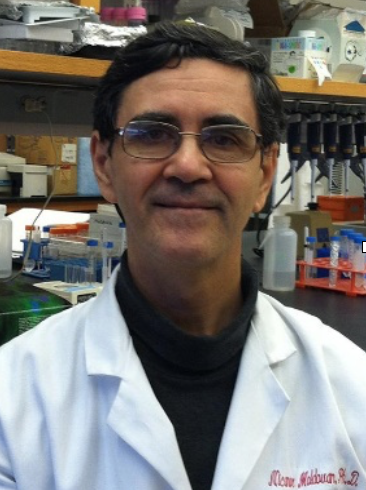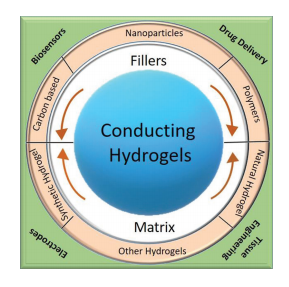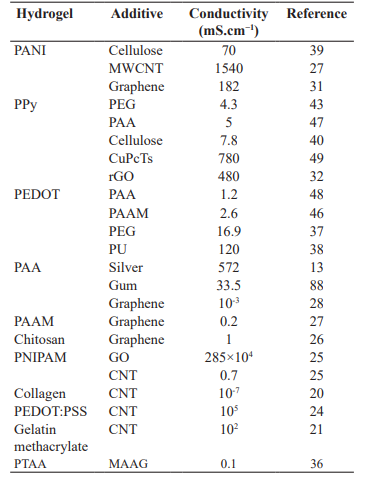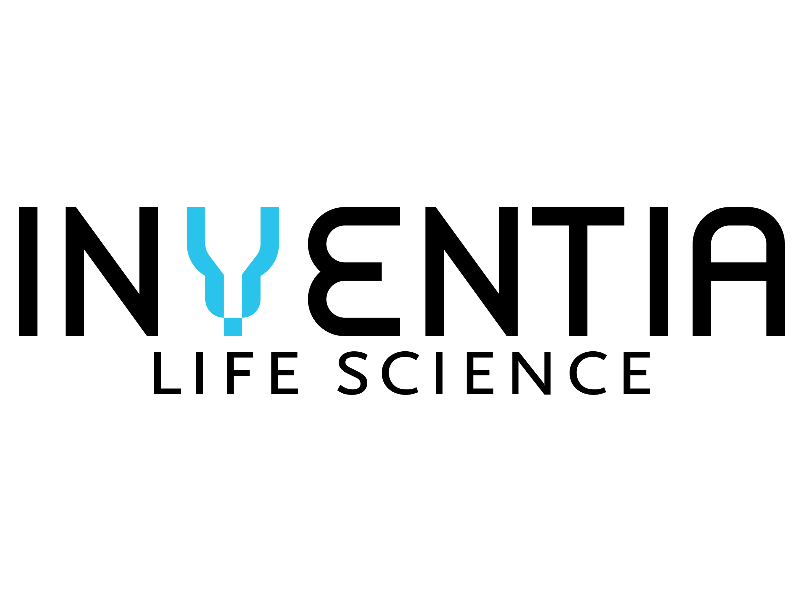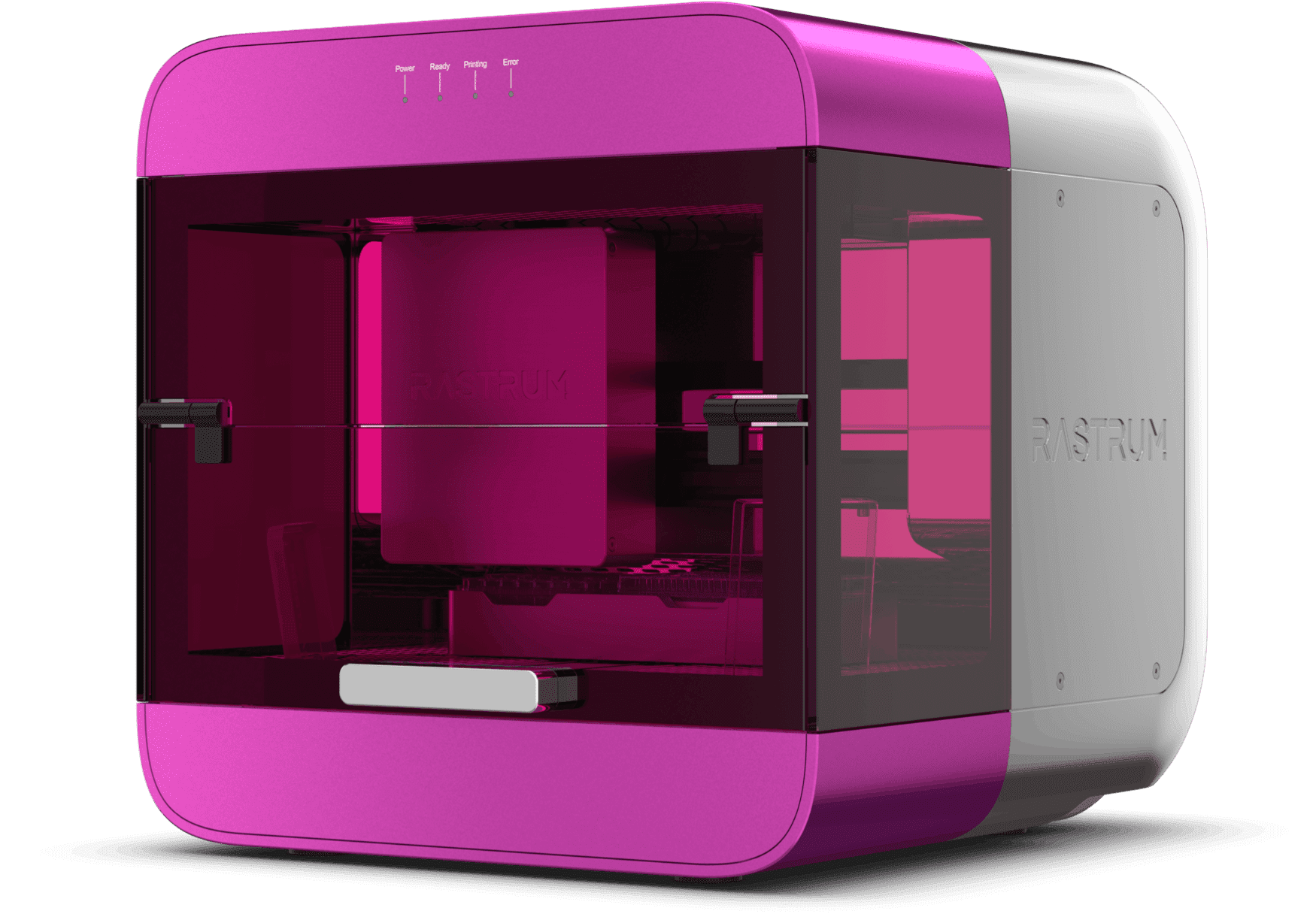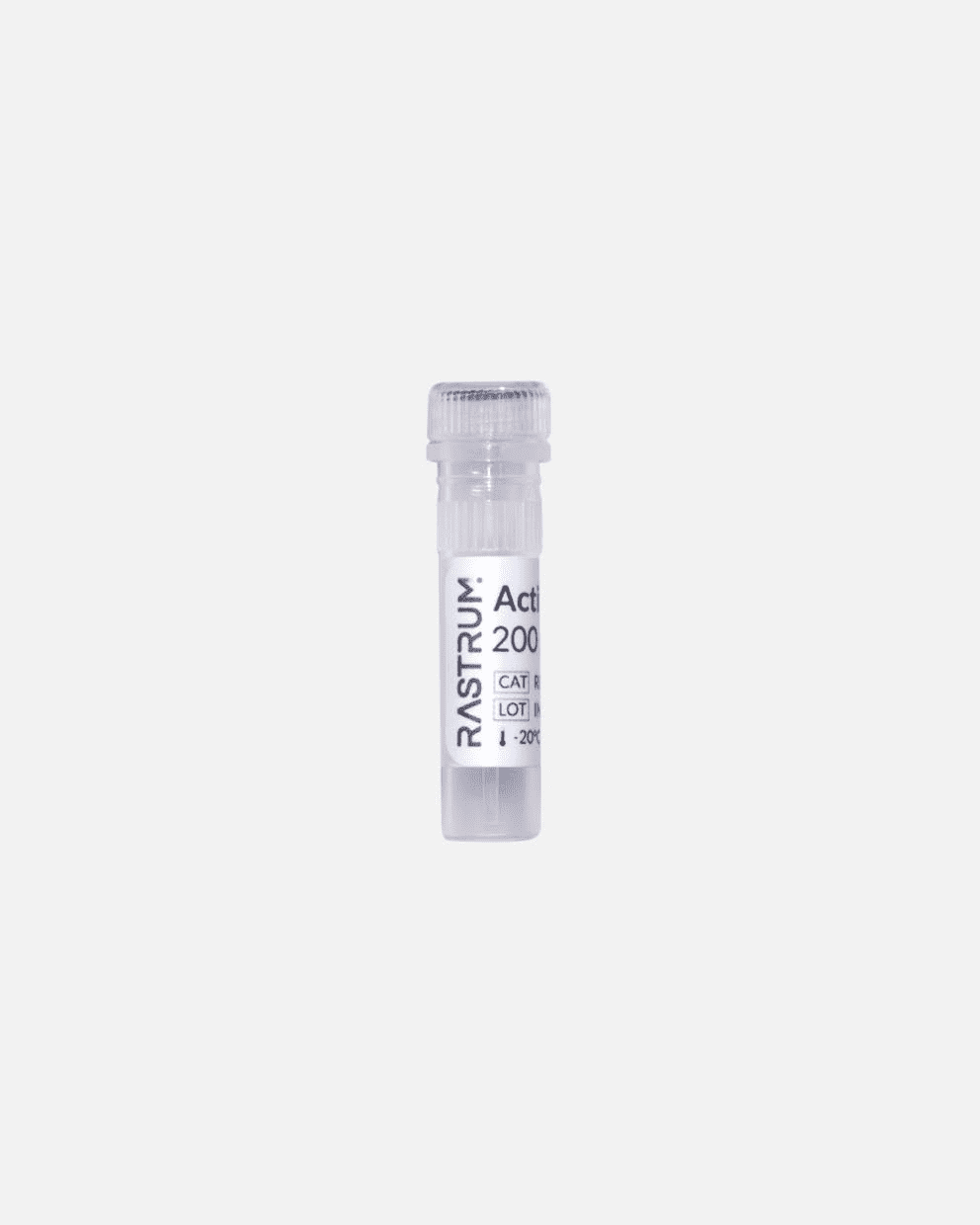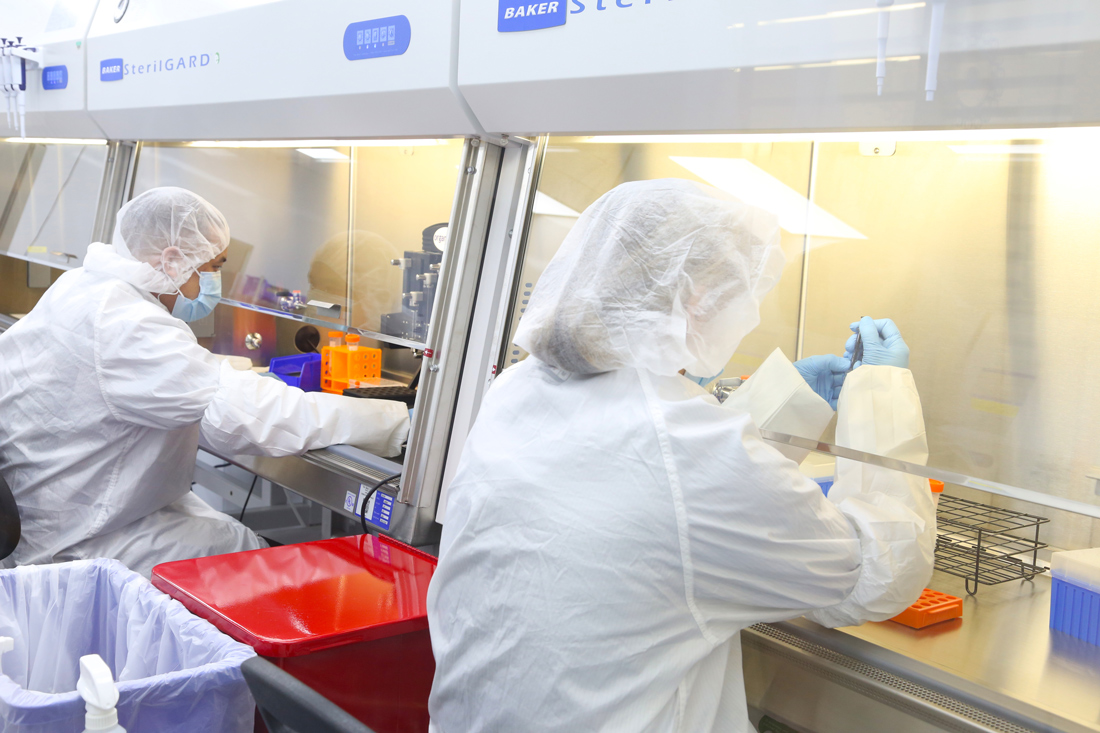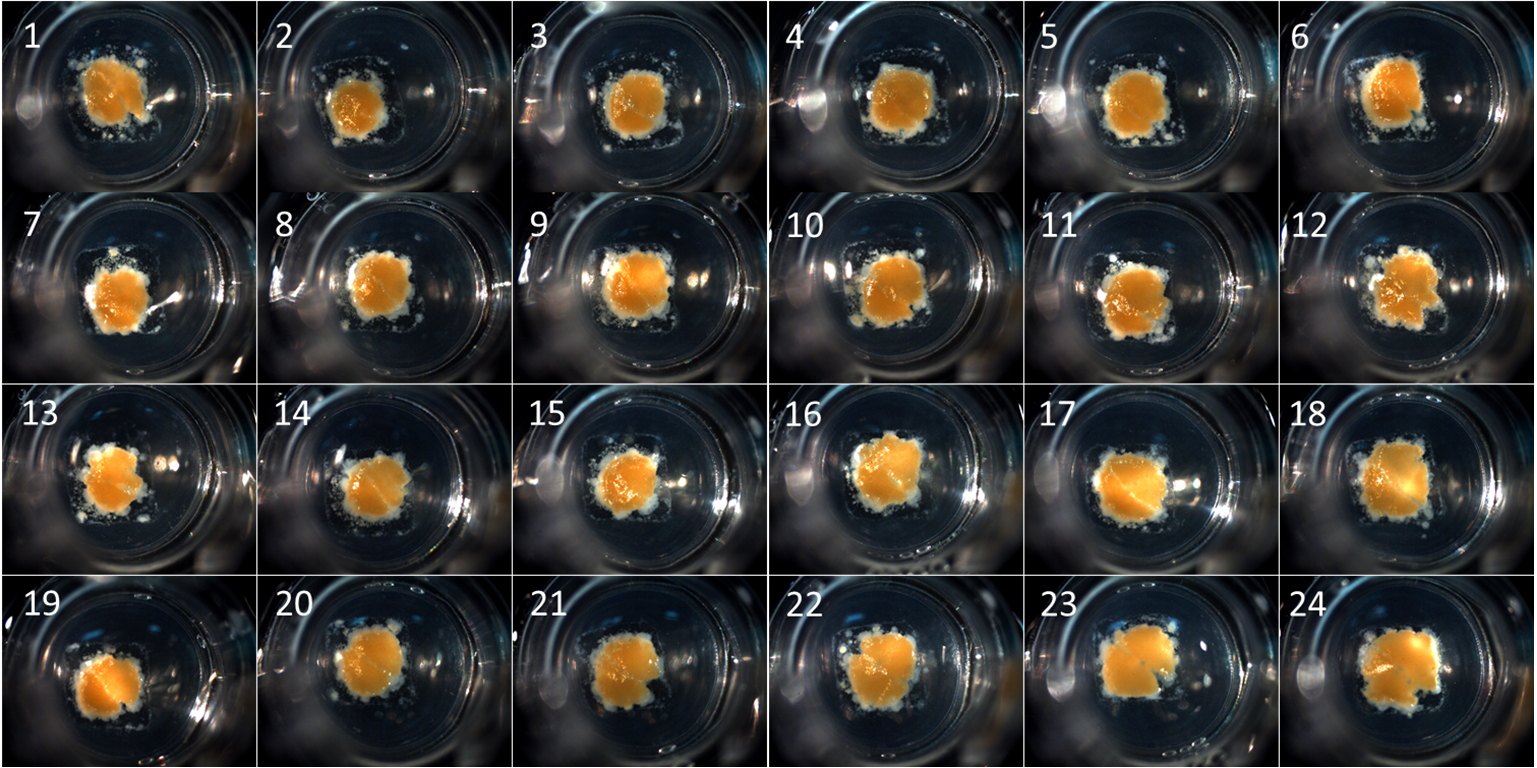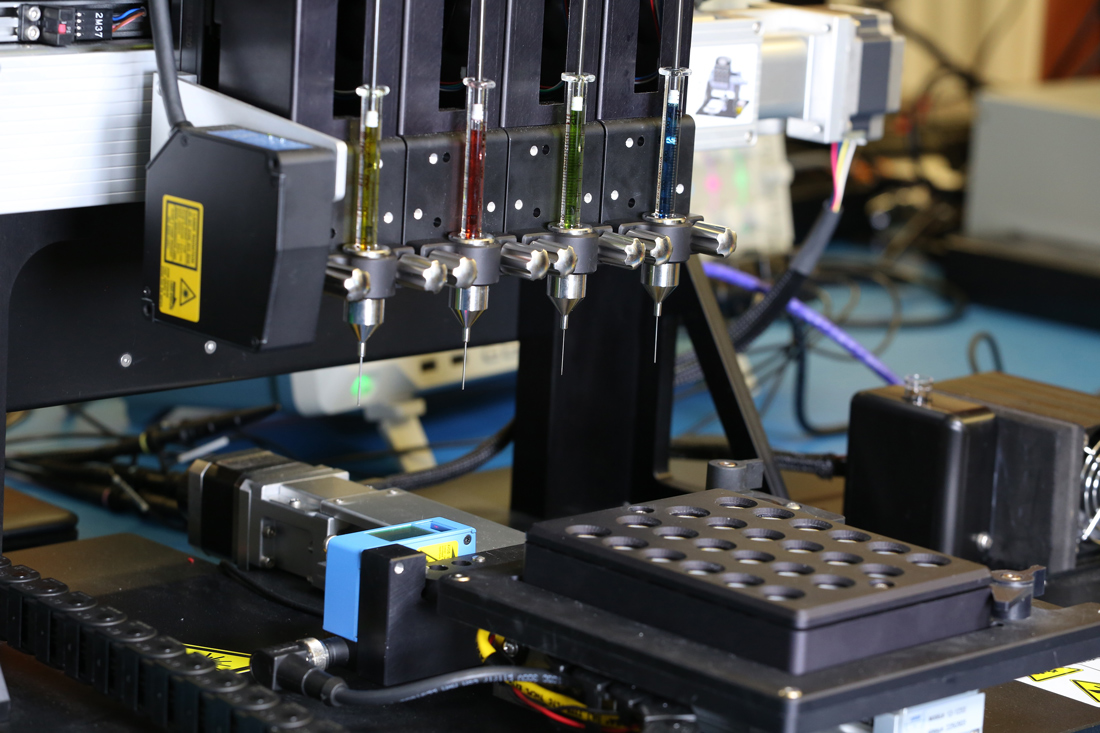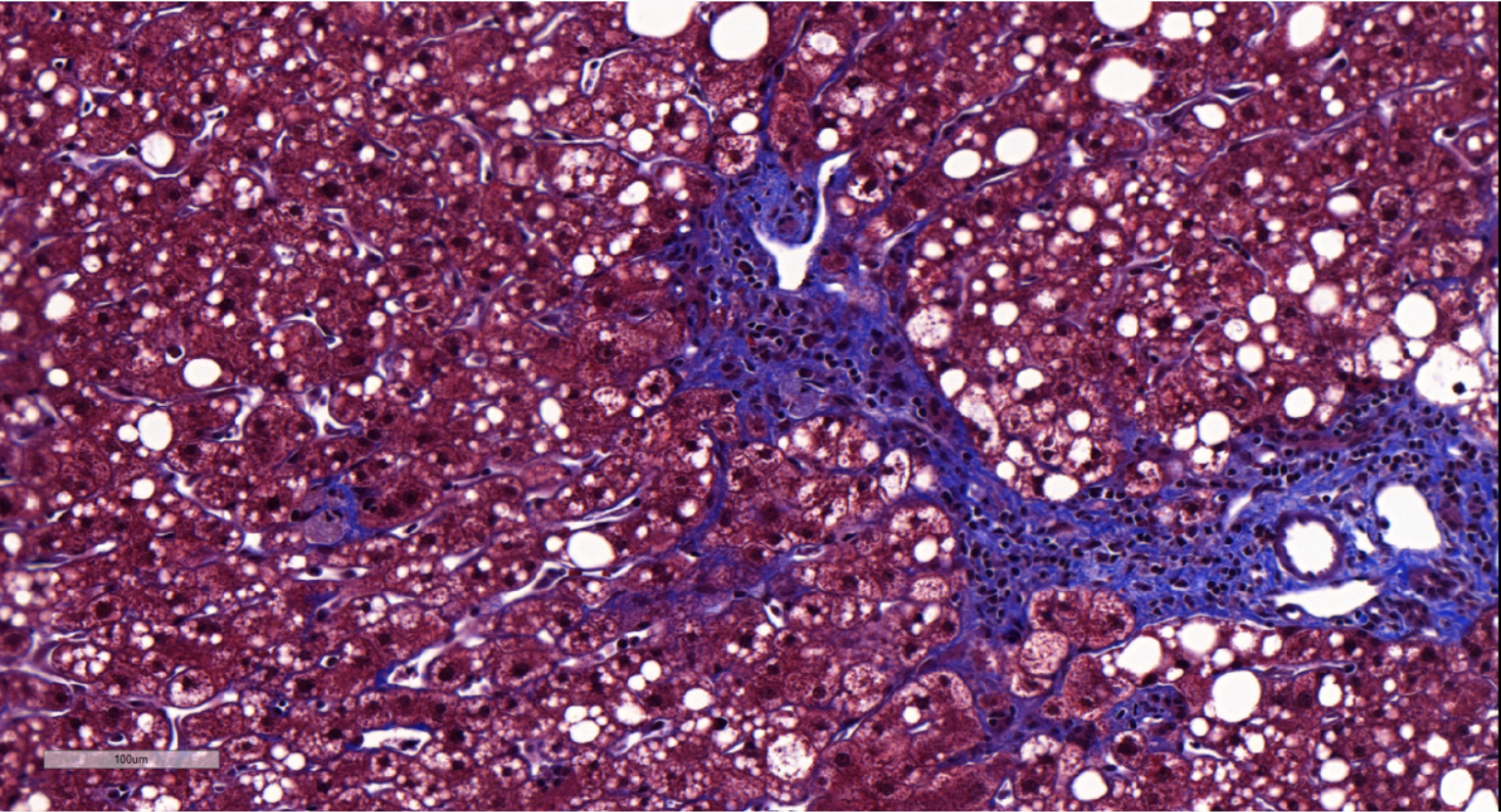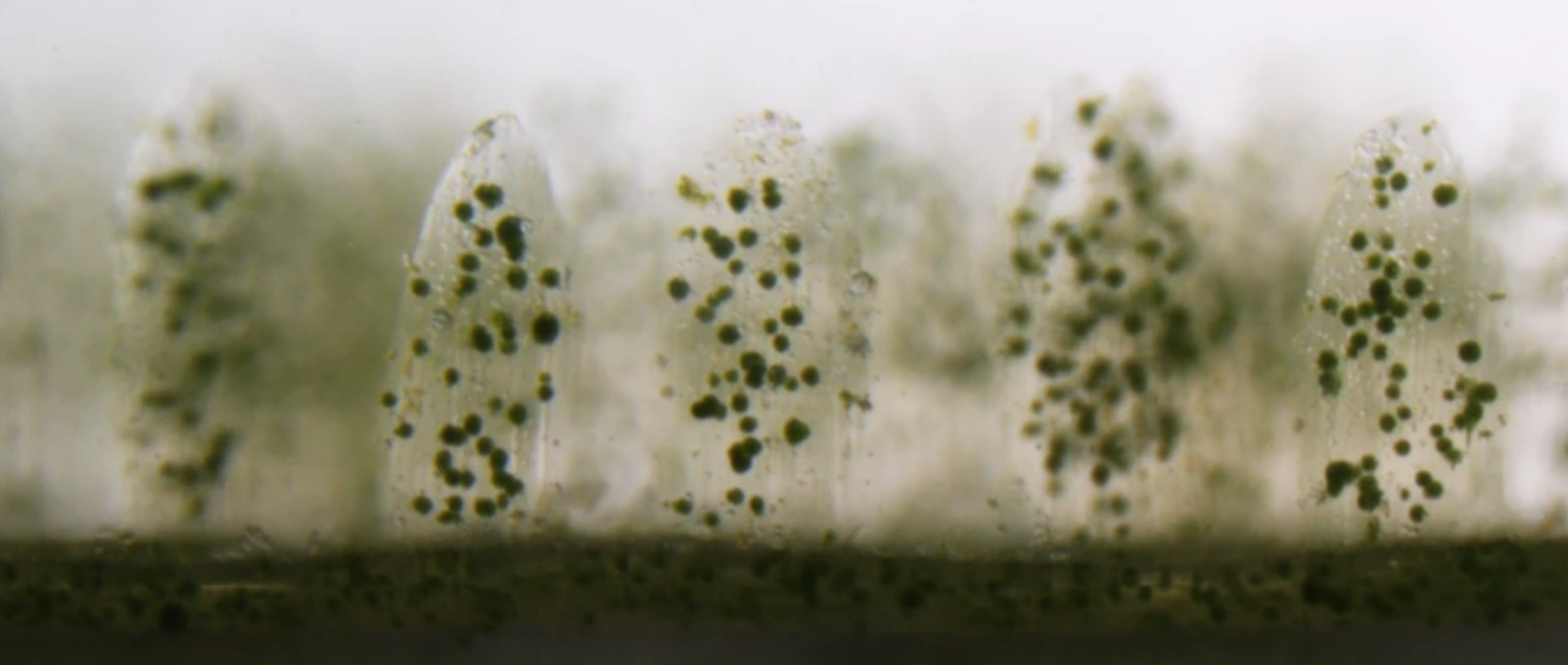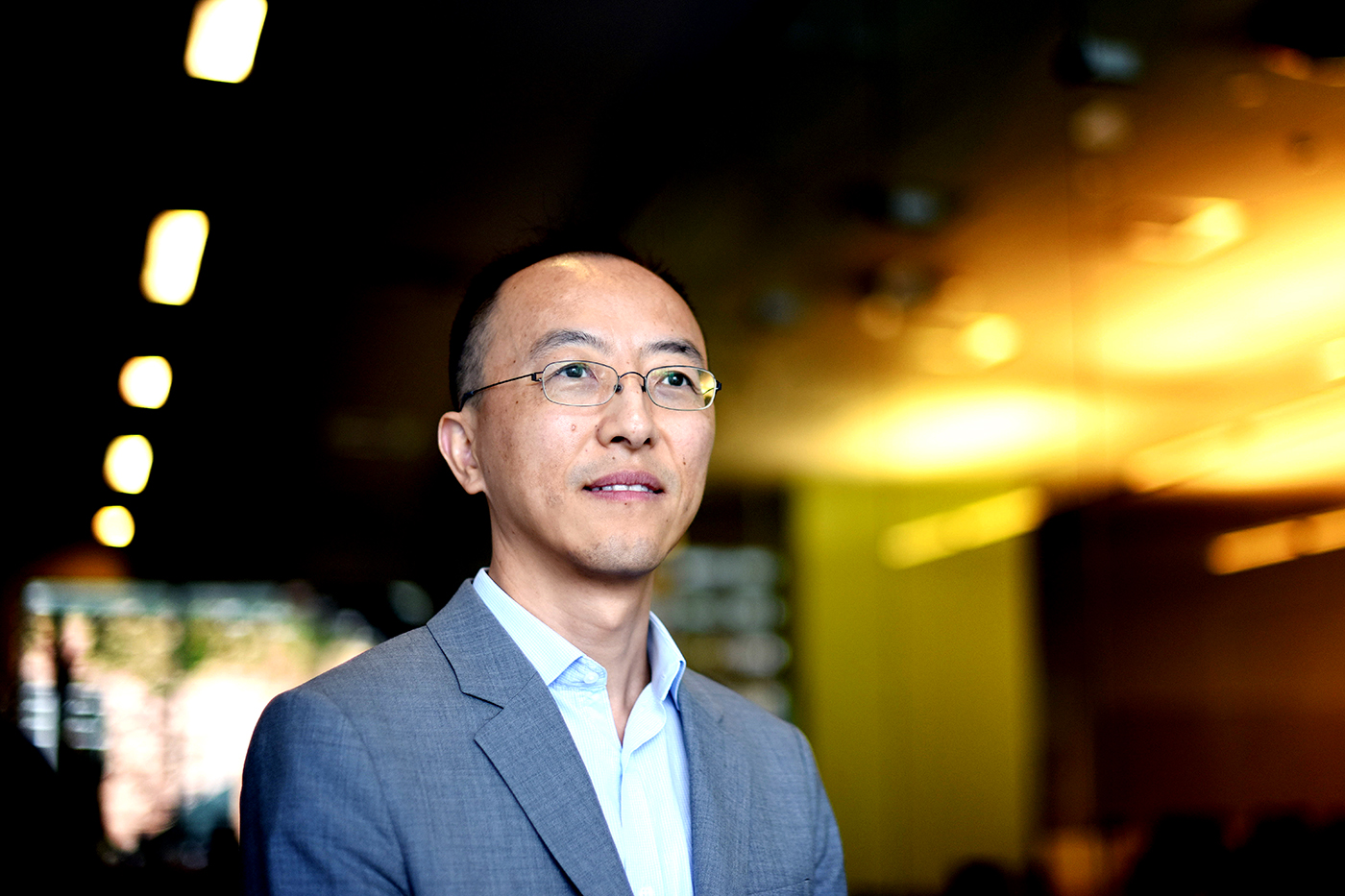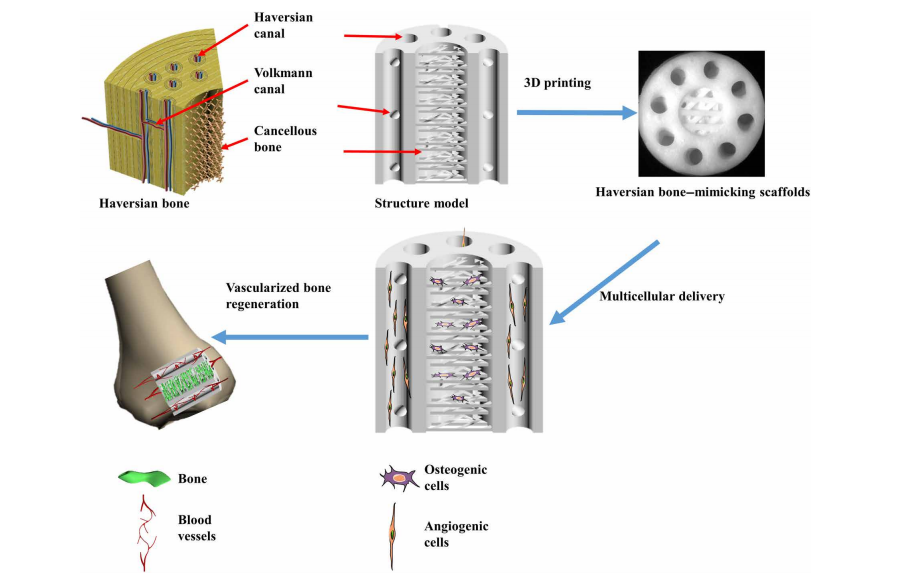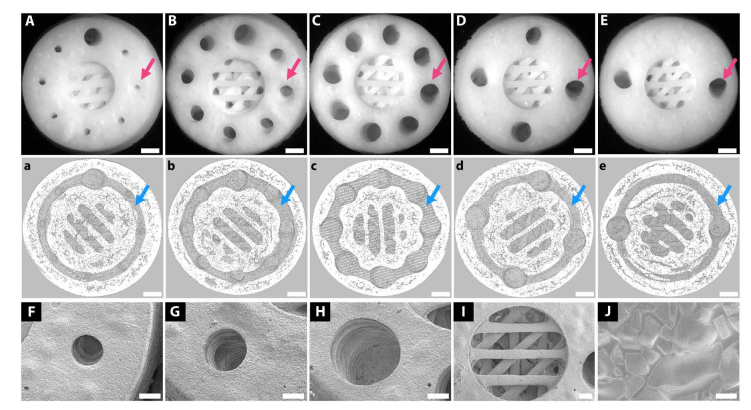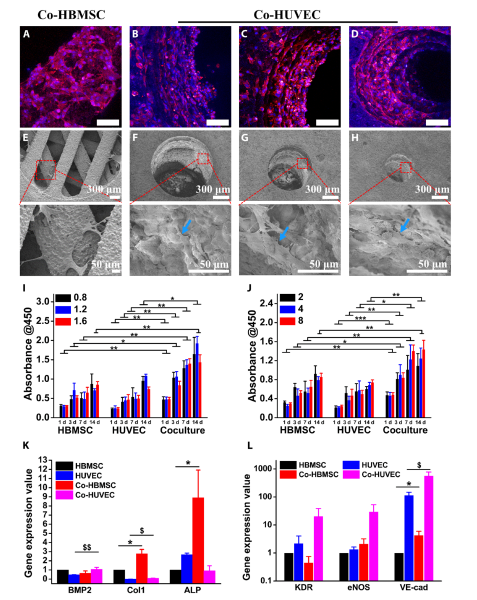Exposure to space radiation, gravity fields, contaminated atmospheres, are all part of the hostile environment astronauts encounter beyond Earth’s orbit. As they transition from one gravity field to another, the fluids in their body can shift upwards, which could lead to pressure on the eyes causing vision problems, among other pretty scary diseases that the National Aeronautics and Space Administration (NASA) has been working to solve for decades as they prepare to send humans on three-year missions to Mars.
NASA wants to make sure that tissue replacement beyond the repairing ability of the organism can be done in space. However, such a scheme would also mean that space agencies will have to plan way ahead of departure on how to leverage innovative technologies, like 3D printing, to aid astronauts on their journey, while directly contributing to their respective development efforts. That is what several United States government agencies are doing, including the Veterans Administration and NASA. More particularly, scientists at the Indianapolis Richard L. Roudebush Veterans Affairs (VA) Medical Center and NASA investigators are now jointly exploring new approaches to 3D bioprinting. The two teams are collaborating in the conversion of human and animal eye fundus images into virtual renderings of the retinal vascular networks for bioprinting. Exploring this field, will not only serve NASA’s interest in space, but also the VA’s concerns here on Earth since tissue replacement is often needed to treat combat, accident or disease-induced damage to veterans.
One of the most serious limitations for the success of tissue engineering, and in particular of the bioprinting approaches to generate artificial tissues, is the difficulty to perfuse the constructs with oxygenated fluids and nutrients. To tackle this issue, Patricia Parsons-Wingerter, senior scientist at NASA’s Space Biosciences Research Branch, and her NASA-wide team joined forces with Nicanor I. Moldovan, founding director of the 3D Bioprinting Core (3DBPC) laboratory at the Richard L. Roudebush VA Medical Center.
Such combined efforts could bring unprecedented success for the bioprinting of vascular networks. In this instance, the NASA team will use their innovative Vessel Generation Analysis (VESGEN) 2D software application for the design of anatomically realistic vascular patterns for bioprinting, while the Indianapolis-based team will provide their know-how on bioprinting vascular models.
In fact, Parsons-Wingerter and her colleagues developed VESGEN 2D, an image analysis program that performs branching quantification of vascular networks, in order to assist in the early detection of changes in vascular patterns of the eye, which may indicate microgravity-induced retinopathy, also the major blinding disease of working-aged adults. However, vascular-dependent diseases include cancer, diabetes, coronary vessel disease, and major astronaut health challenges in the space microgravity and radiation environments, especially for long-duration missions. In this sense, VESGEN 2D maps and quantifies vascular remodeling for a wide variety of quasi-2D vascularized biomedical tissue applications
Parsons-Wingerter’s concern with eyesight problems related to space travel has been historically well-founded. According to one study sponsored by NASA several years ago, space flights that last six months or longer can cause changes in astronauts’ eyes and vision. At the time, this discovery had a major impact on plans for a manned flight to Mars, making this a top priority for NASA’s Space Medicine research team. During the study, seven astronauts that were examined had eye structure and vision abnormalities, most commonly the flattening of the back of the eyeball, changes in the retina (the light-sensitive area at the back of the eye) as well as the optic nerve. Knowing now that vision can be severely compromised in space now demands a lot of attention from researchers, especially, since astronauts, like airline pilots, must have 20/20 vision to carry out most of their work in orbit.
According to Parsons-Wingerter, VESGEN is in fact, currently being used to help understand and ameliorate vision impairments in astronauts and terrestrial adults diagnosed with diabetic retinopathy. And it’s no surprise that VESGEN 2D will be utilized to aid in the design of anatomically realistic vascular patterns for bioprinting since this image analysis program offers insightful read-outs (or biomarkers) of dominant molecular signaling targeted by drug and therapeutic development.
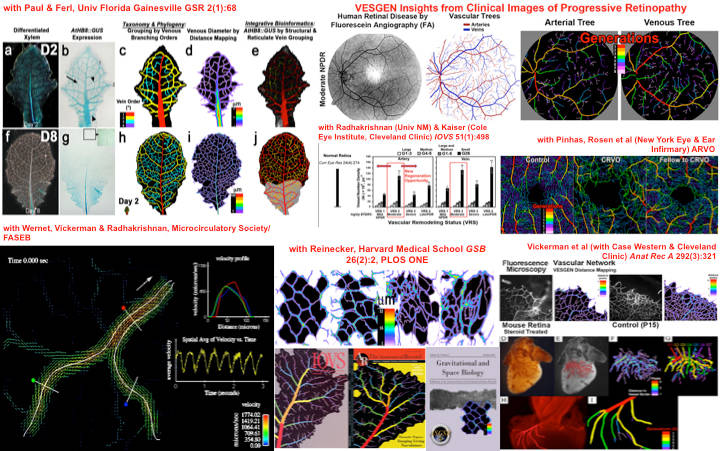
Composite images and journal cover illustrations of vascular patterning collaborations with other scientists for VESGEN research (Credit: NASA)
Meanwhile, Moldovan’s 3DBPC laboratory (also known to many as the “Core”) primarily serves the VA investigators’ needs, helping with workflow design and implementation from project conception through funding and execution. More specifically, the Core provides assistance with hydrogels preparation, bioinks characterization, cell cultivation, samples mixing, 3D model printing, cell-containing constructs bioprinting, incubation, perfusion, and characterization (by fluorescence microscopy, micro, and macro photography), up to data analysis and preparation for publication. Current activities in the Core include the generation of bone, cartilage, retinal, neural, and other 3D models.
Funded and administered by the Indiana Institute of Medical Research (IIMR) and supporting the overall research mission of the Veterans Affairs Medical Center in Indianapolis, the Core features the bioprinter 3DDiscovery, which was purchased from Swiss company regenHU through a VA Shared Equipment Evaluation Program (ShEEP) grant.
Another example of the commitment of government agencies to work together to develop healthcare solutions for the future, the Richard L. Roudebush VA Medical Center has also recently joined NASA’s centennial Vascular Tissue Challenge, a project that rallies scientists worldwide to produce viable thick-tissue assays that can be used to advance research on human physiology. NASA began the Vascular Tissue Challenge in May 2019, in collaboration with the Methuselah Foundation and thanks to the support from the New Organ Alliance (NOA), a non-profit organization aiming to catalyze the tissue engineering field. Roudebush VA Medical Center’s Moldovan is also participating in this venture as chair of the NOA’s In Vitro Tissue Models Sub-Committee.
Considering that one of the main projects in the Core is the bioprinting of vascular models, this new joint effort with Parsons-Wingerter is considered by them as a natural step to move forward the research for both teams. In fact, the same approach with VESGEN 2D can be used for the realistic representation, and the adaptation to the printable format of vascular networks of other organs, such as rat mesentery or mouse colon, to be incorporated as region-specific cellular compositions in actual bioprinted tissue constructs. The teams claim that these constructs will be useful both as in vitro models for mechanistic studies and drug discovery and for the eventual replacement of damaged tissues or organs. After all, that is exactly what NASA and the VA are aiming for, both here and in space.
Considering that the US space agency has recently asserted its goal of sending astronauts to Mars once again, researchers, like Parsons-Wingerter and Moldovan, are crucial to the future mission’s, success. This is especially relevant since such Mars missions would last from seven months to two or more years. As they continue to solve many of the health-related issues attached to long-duration space expeditions, we will surely find out more about their work as they combine creative talents to develop more bioprinting innovation.
The post Indianapolis VA Medical Center and NASA To Explore 3D Bioprinting for Healthcare appeared first on 3DPrint.com | The Voice of 3D Printing / Additive Manufacturing.



